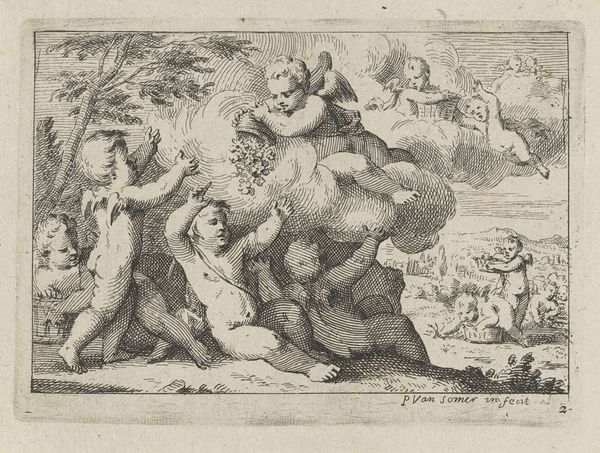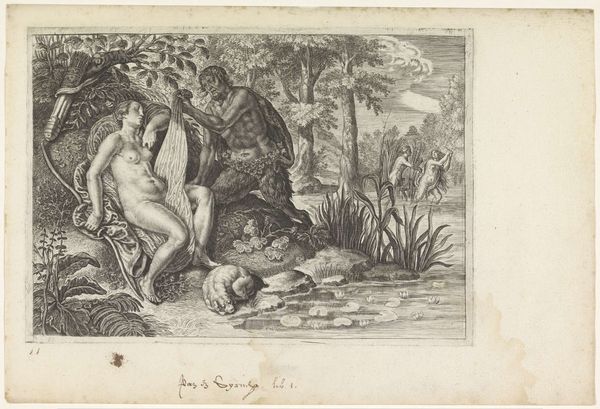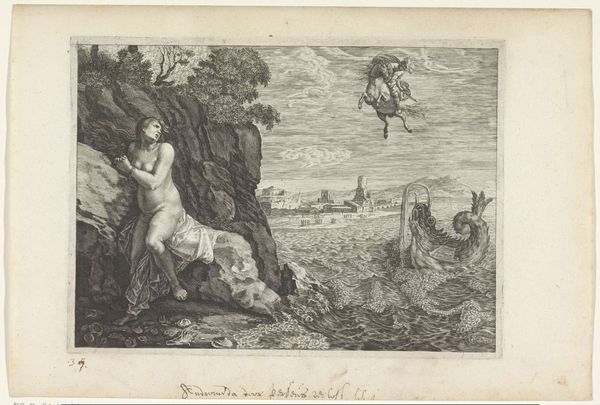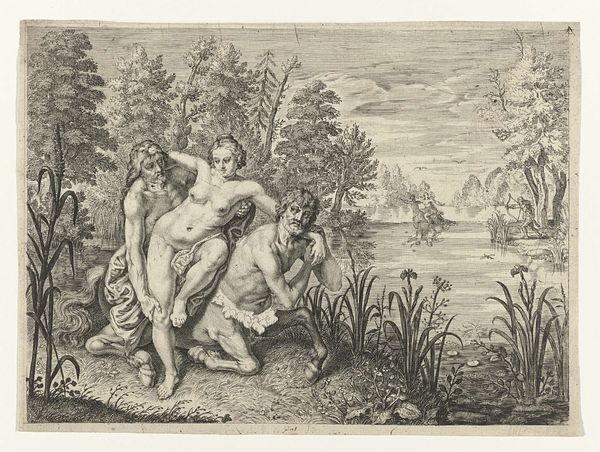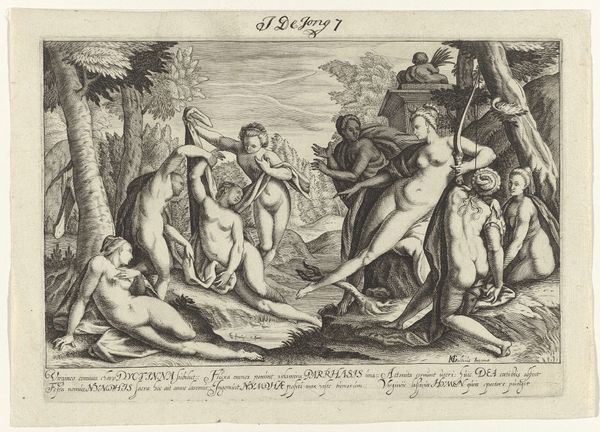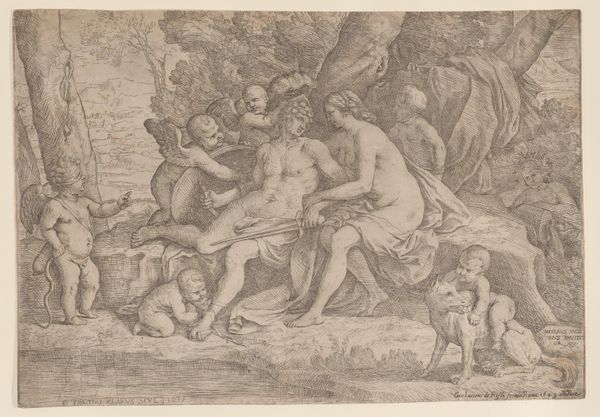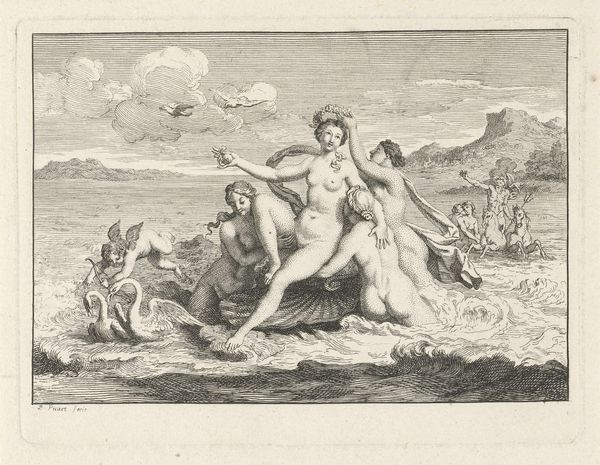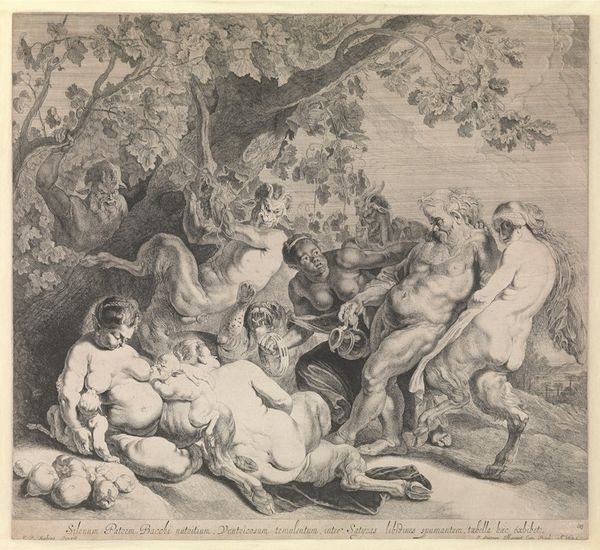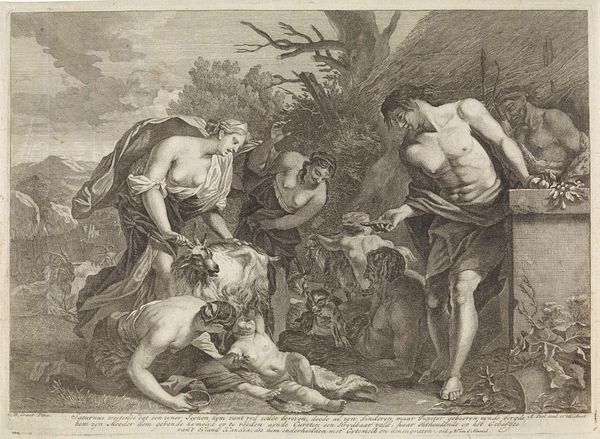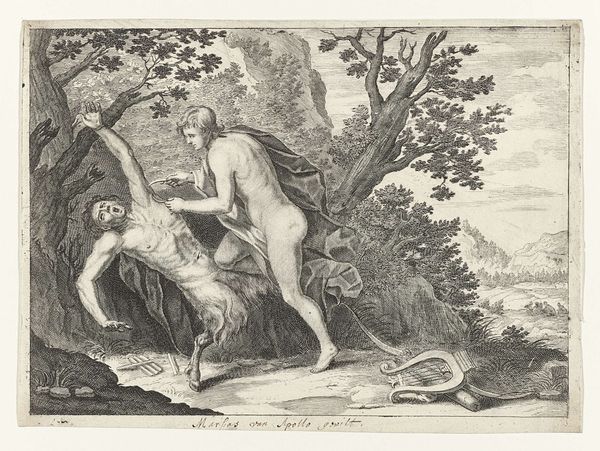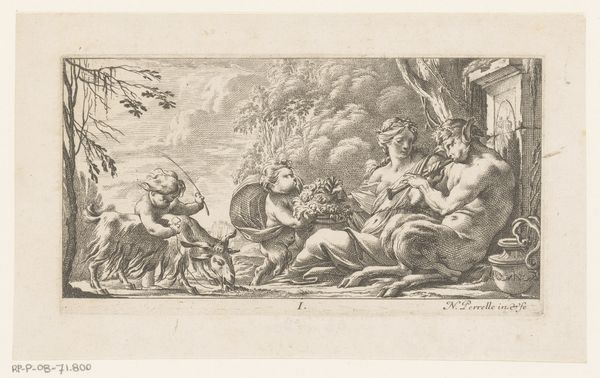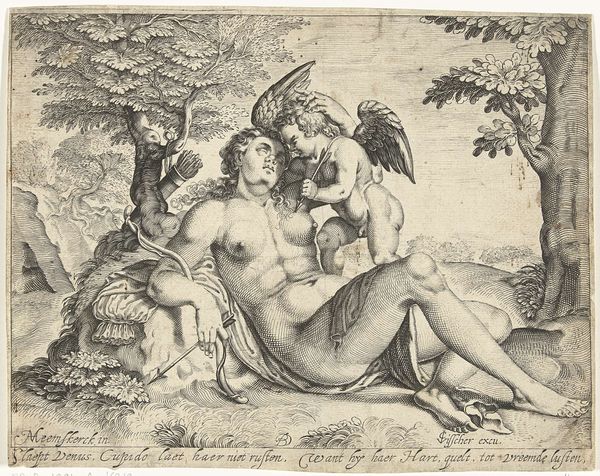
print, engraving
#
allegory
#
baroque
# print
#
figuration
#
history-painting
#
nude
#
engraving
Dimensions: height 160 mm, width 224 mm
Copyright: Rijks Museum: Open Domain
Curator: Let's take a look at "Venus waarschuwt Adonis," or "Venus warning Adonis" an engraving by Crispijn van de Passe II, dating from about 1636 to 1670. Editor: There's a somberness to this engraving; it feels restrained, the monochrome adding to the gravitas despite the tender scene depicted. Curator: Absolutely. Van de Passe really encapsulates a significant shift in societal awareness here. We have Venus, goddess of love, whispering a warning to Adonis, who, legend tells us, is doomed to be killed during a hunt. Notice how their physical proximity is fraught with unspoken anxiety. Editor: The lines are incredibly detailed. See the contrast between the smooth skin and the almost wiry hair. The foreshortening of the bodies works remarkably well in suggesting depth and perspective. It's an accomplished handling of the medium, I would say. Curator: It’s interesting, isn’t it, how the traditional allegorical themes – love, death, fate – are depicted with such an acute awareness of gendered power dynamics? Venus' agency, even in warning Adonis, is framed within the inevitability of his tragic destiny, highlighting the vulnerability inherent in masculinity in some ways. Her nude presentation speaks more towards sacrifice and maternal mourning of tragic figures and concepts such as, war and pandemics; common themes in funerary arts. Editor: Looking at it solely from a technical perspective, observe the use of light and shadow – it really creates a dramatic mood. The artist masterfully renders texture. Look closely at the bark on the tree or the fur of the dogs, using very different marks and thicknesses. Curator: But the narrative itself cannot be separated from these techniques. Van de Passe asks us to confront our own relationships with power, privilege, and the impending doom that always seems to shadow even the most intimate of moments. And the dogs in particular create the allegory as protectors against fate which ultimately fail, creating our pathos. Editor: I remain struck by how a black and white engraving can communicate such richness and emotion, even without any explicit commentary, by so strongly focusing the viewer. Curator: Agreed, it allows us a view into these Baroque anxieties that remain remarkably contemporary. A painful glimpse, if you will.
Comments
No comments
Be the first to comment and join the conversation on the ultimate creative platform.
